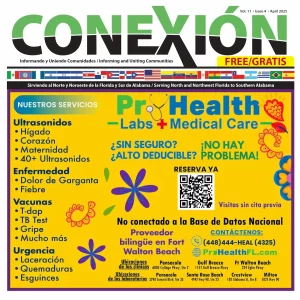By Marcos Otero
Over the last several years, we have discussed the breast exam, but it is wise to explain it again. So, let us talk about the breast exam.
The diagnosis of breast cancer continues to be terrifying! Survival improves with awareness and early diagnosis.
The first and most crucial step is self-awareness. You and your partner should feel and be aware of what your breast feels like. Why? The most common finding is a new lump or mass. You need to know your chest because it is filled with mammary glands that can feel like lumps. You must be able to identify that something has changed. Most breast cancer lumps are painless, hard, and have irregular borders, but some can be tender, soft, and round. For these reasons, ALL new breast mass, lumps, or changes should be checked.
Other symptoms include swelling of all or part of a breast, skin irritation or dimpling, breast pain or nipple pain, nipple retraction, redness, scaliness, or thickening of the nipple or breast skin, and nipple discharge. Breast cancer can spread to the lymph glands under the arm or around the clavicle and cause swelling in those areas. What makes it difficult is that ALL these symptoms can also be found with benign findings as well. So, know your breast and have them examined.
A good breast exam has five steps:
Step 1: Stand in front of a mirror with your shoulders straight and your arms on your hips. LOOK at your breast. Study them. Look for changes from their usual size, shape, and color. Are they evenly shaped without visible distortion or swelling? If you see any of the following changes: dimpling, puckering or bulging of the skin, a nipple that has changed position or an inverted nipple (pushed inward instead of sticking out), redness, soreness, rash, or swelling, have your breast examined.
Step 2: Raise your arms and look for the same changes.
Step 3: Look for any signs of fluid coming out of one or both nipples (this could be a watery, milky, or yellow fluid or blood).
Step 4: Feel your breasts while lying down, using your right hand to feel your left chest and then your left hand to feel your right breast. Use a firm, smooth touch with the first few finger pads of your hand, keeping the fingers flat and together. Use a circular motion about the size of a quarter. Do not miss a centimeter. Cover entire breast top to bottom, side to side—from your collarbone to the top of your abdomen, and from your armpit to your cleavage.
Step 5: Feel your breasts while you are standing or sitting. Many women find that the easiest way to feel their breasts is when their skin is wet and slippery, so they like to do this step in the shower.
Breast self-exam should be part of your monthly health care routine, and you should visit your doctor if you experience breast changes. If you’re over 40 or at high risk for the disease, you should also have an annual mammogram and physical exam by a doctor.
The earlier breast cancer is found and diagnosed, the better your chances of beating it. Always remember that if you are in doubt or unsure, see your medical provider. Please also remember that mammograms do not find all breast cancers.


